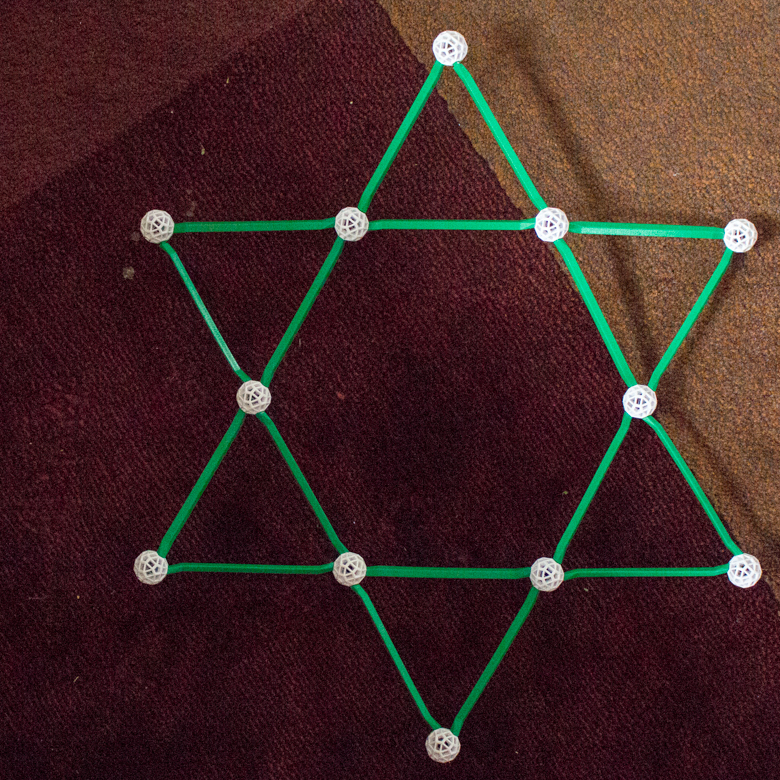Just as memorizing sight words can help a kid read better and more confidently, there are tons of math facts that, if memorized, will make a kid's calculation work quicker and more confident.
Our culture is well used to having kids memorize the multiplication tables through at least 10 (through 12 is better!), and certain formulas like the quadratic formula or the Pythagorean theorem, but it's so helpful to just know, when you're busy doing your algebra, say, if a number is a perfect square or a Pythagorean triple, etc. It builds confidence when a student is learning advanced math concepts, and it increases their speed and fluency, which they will VERY much appreciate whether they're working through a page-long proof or an SAT problem set!
When my kids were pretty little, we dedicated the first ten minutes of the first car trip of the day to memory work, and they memorized a lot of advanced concepts by rote then (most famously, the first 25 digits of Pi, a party trick that they still both often pull out over a decade later, lol!), but it's a better aid to learning and to memorization to have them, whenever possible, create for themselves the anchor chart that contains the information I want them to memorize.
So when I realized recently that my teenager has lost most of the prime numbers to 100, I pulled back out the same activity that she used to create her Prime number chart back when the kids memorized the primes to 100 the first time around back in 2016.
It's the Sieve of Eratosthenes!
Creating the Sieve of Eratosthenes is simple. All you need are a hundred chart and some colored pencils or crayons. This hundred chart has the numbers by rows, and this hundred chart has the numbers by columns. This hundred chart is blank, for some sneaky real-world handwriting practice writing the numbers to 100.
To create the sieve, you simply start with the first Prime number, 2. Don't color it, but color all of its multiples. Bonus points if you unlock the pattern and color it that way! The next uncolored number is your next Prime number, 3, so leave it blank but color all its multiples. It makes a pretty pattern, too!
Carry on through 7, and by the time you've colored the last multiple of 7, you'll have colored every composite number through 100, and every uncolored number is a Prime. Your grid will look like this:
 |
| photo credit: Wikipedia |
I think the patterns that it makes are beautiful and fascinating!
While you're working, it's best if you have a Ginger Gentleman supervise you:
While you're working, you also might notice that you have a sudden, inexplicable swarm of Asian lady beetles inside your home. Would the Ginger Gentleman like to meet one?
He very much would!
.jpg) |
| Please note: no Asian lady beetles were harmed in *that* particular encounter. When Matt got home and found the swarm and went for the vacuum cleaner, though, well... |
The Sieve of Eratosthenes is a quick, enjoyable, non-rigorous enrichment activity for an older kid, best used for a review of Prime numbers or to construct a memory aid/anchor chart. However, you can actually also do this activity with quite young kids, since multiplication is the only skill required. It's fun and hands-on, the patterns are pleasing, and it gives kids a really interesting math concept to explore.
Here are some good books to use with younger kids in partnership with this activity:
To extend the fun, younger kids can play Prime Number Slapjack or color in a Prime path maze. If kids are a bit older and are ready to properly learn about Primes, composites, factor trees, and the factorization of Primes, this lesson and this lesson are excellent jumping-off points.
We have a lot of wall space in our home, and my kids have always enjoyed making large-format posters, maps, and charts to put on our walls. A large-format hundred chart mounted on a wall lets kids have a different experience coloring it in mural-style, and would also allow room for kids to write each composite number's factors into those squares. Alternately, extend the hundred chart to 1,000 and keep sieving, although I wouldn't blame you for eventually pulling out the calculator!
Here are some books that older kids and adults would enjoy; completing a reading assignment (and perhaps even a response essay!) builds context and adds rigor to an otherwise simple activity, and is a good way to facilitate different ages/abilities working on the same project:
Here are some other math facts that a student could aid fluency by memorizing:
- fraction/decimal conversions
- PEMDAS
- Quadratic formula
- squares
- square roots (perfect square factors and simplified square roots to 100)
- Pi to several digits
- Pythagorean theorem
- Pythagorean triples
- triangle identities
- SOH CAH TOA
P.S. Want to follow along with my craft projects, books I'm reading, dog-walking mishaps, encounters with Chainsaw Helicopters, and other various adventures on the daily? Find me on my Craft Knife Facebook page!
.jpg)
.jpg)
.jpg)











.jpg)
.jpg)
.jpg)

.jpg)
.jpg)
.jpg)
.jpg)



.jpg)






.jpg)




